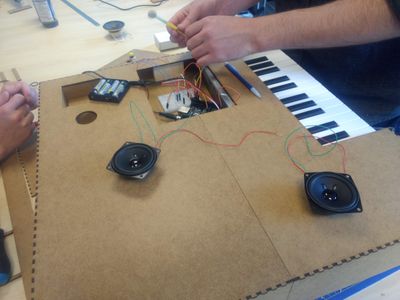Kommunikationskedjan, musikerns roll gentemot datorgenererad musik.
Markering av musikalisk struktur: tempo, frasering, harmonisk och melodisk spänning, repetitiva mönster, artikulation, accenter, ensembletiming.
Känslouttryck: kompositionens egna uttryck, akustiska parametrar och dess mappning till känslouttryck, syntes, automatisk igenkänning, jämförelse med andra modaliteter (ansiktsuttryck, gester, tal), kulturella respektive inbyggda koder.
Kopplingar till rörelse: dans och olika gester, slutritardando, frasering.
Den musikaliska kontexten: konsert, bakgrund, filmmusik.
MIDI standarden: kodning, kontrollmöjligheter, Standard MIDI FIles, General MIDI.
Syntes; syntesmetoder, sampling, fysikaliska modeller, ljudbibliotek.
Datorverktyg: pd (pure-data), Director Musices, Digital Audio Workstations, notationsprogram, samplingsinstrument.
Efter godkänd kurs ska studenten kunna
- identifiera och förklara principer för musikalisk kommunikation, inklusive struktur, känslouttryck och gester i syfte att jämföra olika musikprodukter
- välja och använda programvaror för att bearbeta musik i symbolisk form, i audioformat eller genom syntes i syfte att påverka kommunikationen
- beskriva och analysera kontrollaspekter hos musikinstrument beträffande begränsningar, expressiv frihet och parametermappning i syfte att modifiera dessa aspekter i nya prototyper
- tillämpa resultat från vetenskaplig litteratur inom musikalisk kommunikation i praktiken
- använda programspråk för musik i syfte att implementera grundläggande ljudsyntes och bearbeta kontrolldata i realtid
i syfte att
- erhålla en gedigen vetenskaplig förståelse av grundläggande principer för hur musik kommuniceras från musiker till lyssnare
- kunna tillämpa detta i nya musikapplikationer, inklusive nya sätt för musikalisk interaktion.
